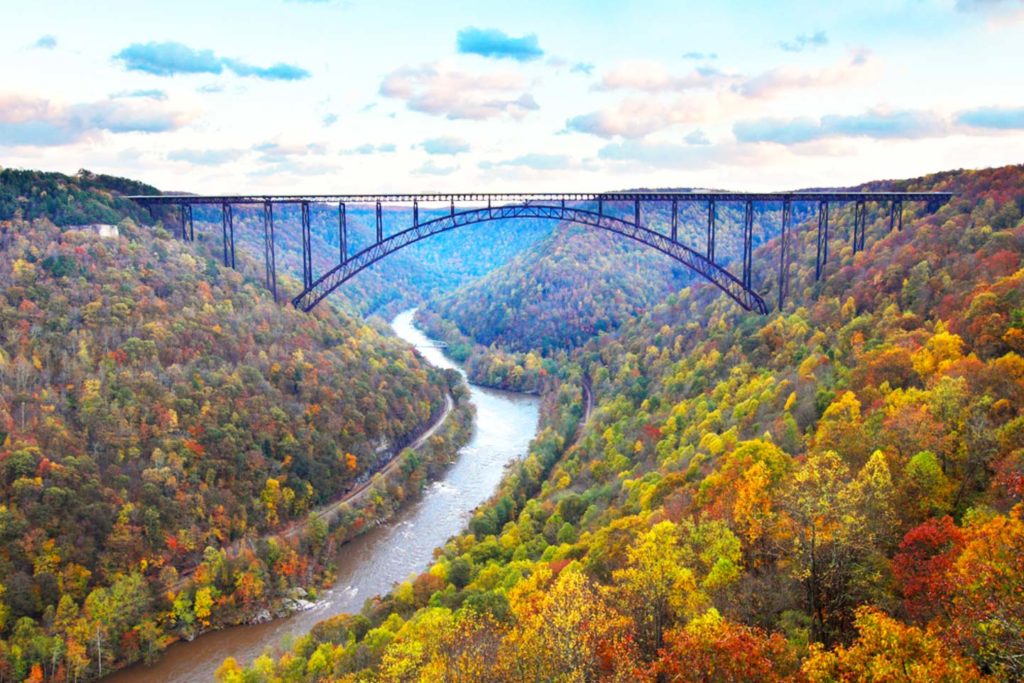
Article Summary: West Virginia National Parks
West Virginia National Parks! We’ve got eight incredible national park sites for you to see on your next visit to The Mountain State.
I’ve been to so many of these amazing places since retiring from teaching in 2018. Did I mention that I taught history? I spent a lifetime teaching about the history behind these momentous sites. Then I got to see them firsthand. And now I’m sharing the stories of these incredible places with you. It doesn’t get any better than that!
To be clear, these are national park sites (as in managed by the National Park Service) but they are not capital letter National Parks with one notable exception. There are only 63 of those (so far). To learn the difference check out our article which explains it.
If you’re planning a trip to the Mountain State then I one book that I highly recommend is: Scenic Driving West Virginia: Including Harpers Ferry, Historic Railroads, and Waterfalls by Su Clauson-Wicker.
We’re going to give you eight wonderful reasons why you’ll want to make West Virginia your next vacation destination.
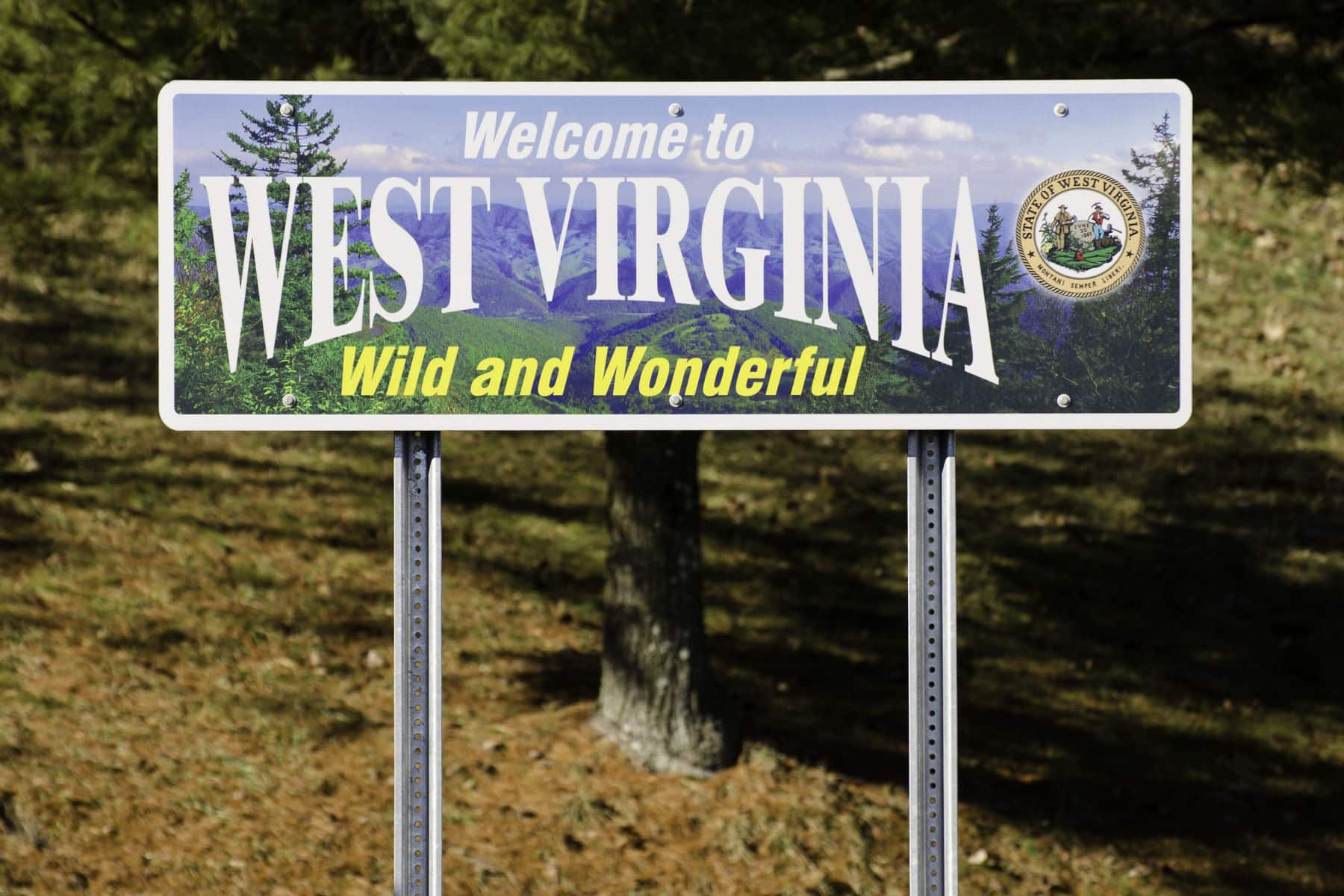
Table Of Contents: West Virginia National Parks
West Virginia National Parks
1. Appalachian National Scenic Trail
The West Virginia National Parks include the longest hiking trail in the world.
The Appalachian National Scenic Trail (AT) is a 2,190-mile long hiking trail that runs from Springer Mountain in Georgia to Mount Katahdin in Maine.
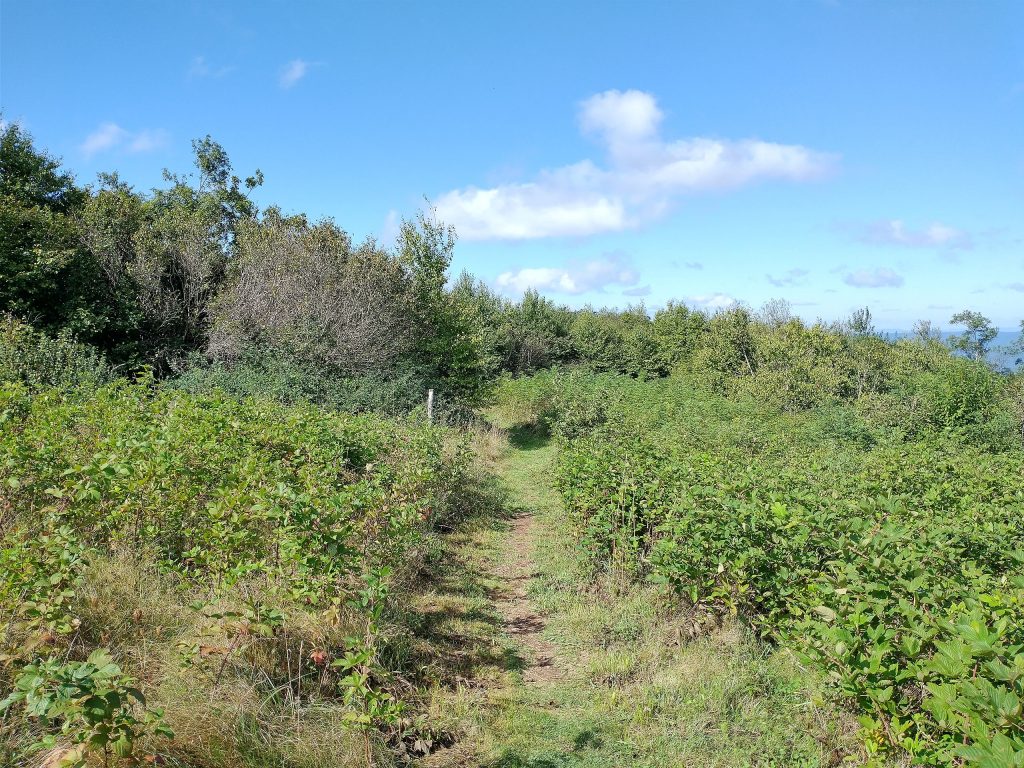
It was first conceptualized by Benton MacKaye in 1921, and was officially completed in 1937 after more than a decade of work by volunteers and the Civilian Conservation Corps.
The trail was designated as the first National Scenic Trail by the National Trails System Act of 1968, and has since become one of the most popular and well-known long-distance hiking trails in the world, attracting millions of visitors every year.
Over the years, the AT has been maintained and protected by various organizations, including the Appalachian Trail Conservancy, which was established in 1925.
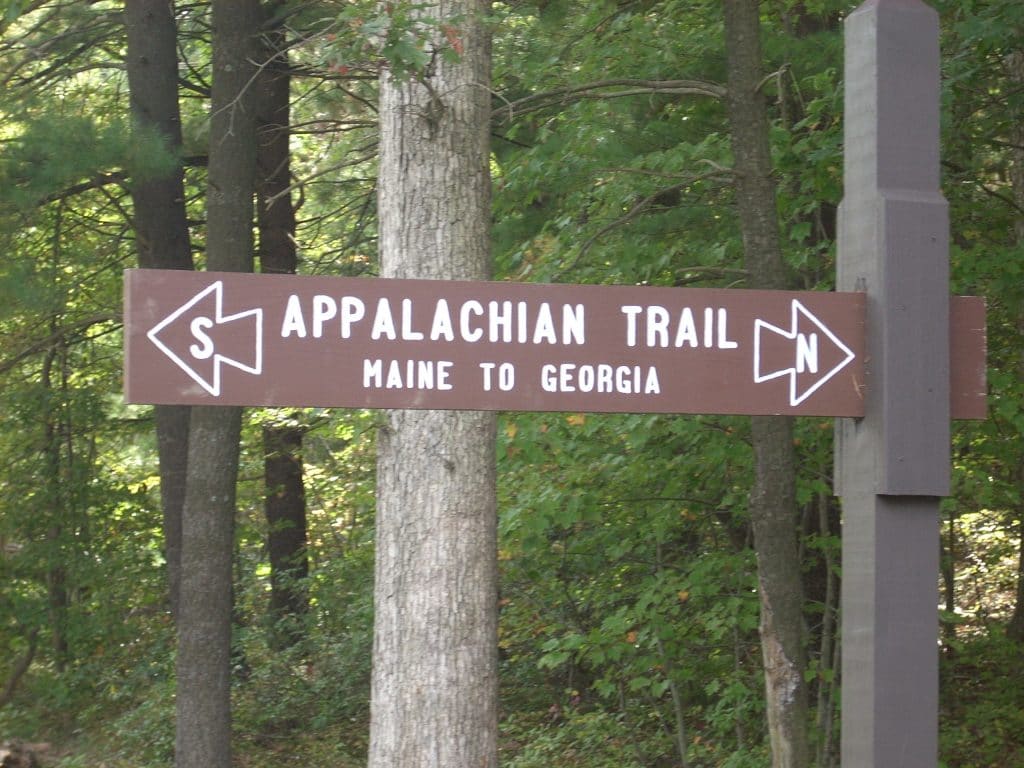
Check Out: 25 BUCKET-LIST Famous Landmarks In America (MUST-SEE)
2. Bluestone National Scenic River
You’ll find some truly breathtaking scenery among the West Virginia National Parks. A case in point is Bluestone National Scenic River.
The Bluestone National Scenic River is a 10.5-mile long river located in southern West Virginia. The river is known for its clear blue water and scenic beauty, and has been protected as a National Scenic River since 1988.
Here’s a brief overview of its history and features:
- Geology: The Bluestone River is formed by the confluence of the East River and the Coal River, and is named for the bluish-gray sandstone formations that are found along its banks.
- Recreational opportunities: The Bluestone National Scenic River offers a wide range of recreational opportunities, including fishing, kayaking, canoeing, and tubing. The river is also a popular destination for hiking, bird-watching, and wildlife viewing.
- Conservation: The Bluestone National Scenic River is an important part of the region’s natural heritage, and has been protected as a National Scenic River to ensure that its unique geological and ecological features are preserved for future generations.
Today, the Bluestone National Scenic River is an important part of the region’s recreational and conservation infrastructure, offering visitors a unique opportunity to explore the natural beauty of southern West Virginia and the rich cultural heritage of the area.
The river provides a tranquil and scenic setting for outdoor recreation and reflection, and is a popular destination for visitors of all ages and interests.

Check Out: List of 128 BEST US National Monuments Ranked
3. Chesapeake & Ohio Canal National Historical Park
As someone who spent almost thirty years teaching history and who remains a lifelong history buff, one of my favorite West Virginia National Parks is the Chesapeake & Ohio Canal National Historical Park.
The Chesapeake & Ohio Canal National Historical Park is located along the Potomac River in Maryland and Washington, D.C.
The park was established to preserve the history and heritage of the Chesapeake & Ohio Canal, a 184.5-mile long waterway that was once used to transport goods and people along the East Coast.
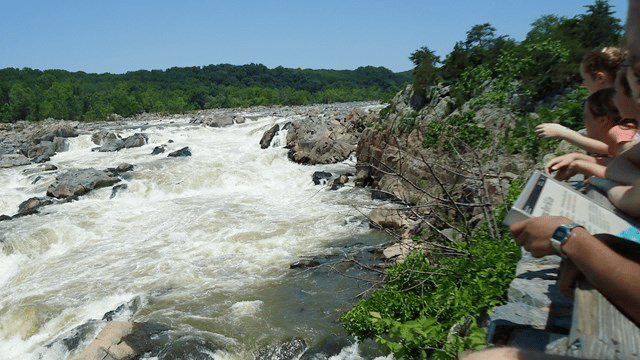
Here’s a brief overview of its history:
- Early 1800s: The Chesapeake & Ohio Canal was first proposed in the early 1800s as a way to transport goods and people from the Chesapeake Bay to the Ohio River Valley.
- 1831-1924: Construction of the canal began in 1831 and took over 30 years to complete. The canal was used to transport goods such as coal, lumber, and agricultural products, and was an important transportation route along the East Coast.
- 1970s: The Chesapeake & Ohio Canal was designated as a National Historical Park in 1971, in recognition of its historical and cultural significance.
- Today: The Chesapeake & Ohio Canal National Historical Park offers a wide range of recreational opportunities, including hiking, camping, fishing, and boating. The park also includes historic locks, towpaths, and other structures that offer visitors a glimpse into the past and the story of the canal.
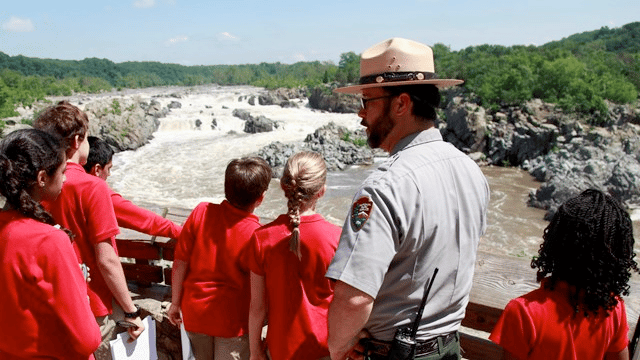
The Chesapeake & Ohio Canal National Historical Park is an important part of the region’s cultural heritage, and is widely recognized for its contributions to American history and culture.
The park offers a unique and fascinating glimpse into the story of the Chesapeake & Ohio Canal, and provides visitors with an opportunity to experience the rich cultural and natural history of the area.
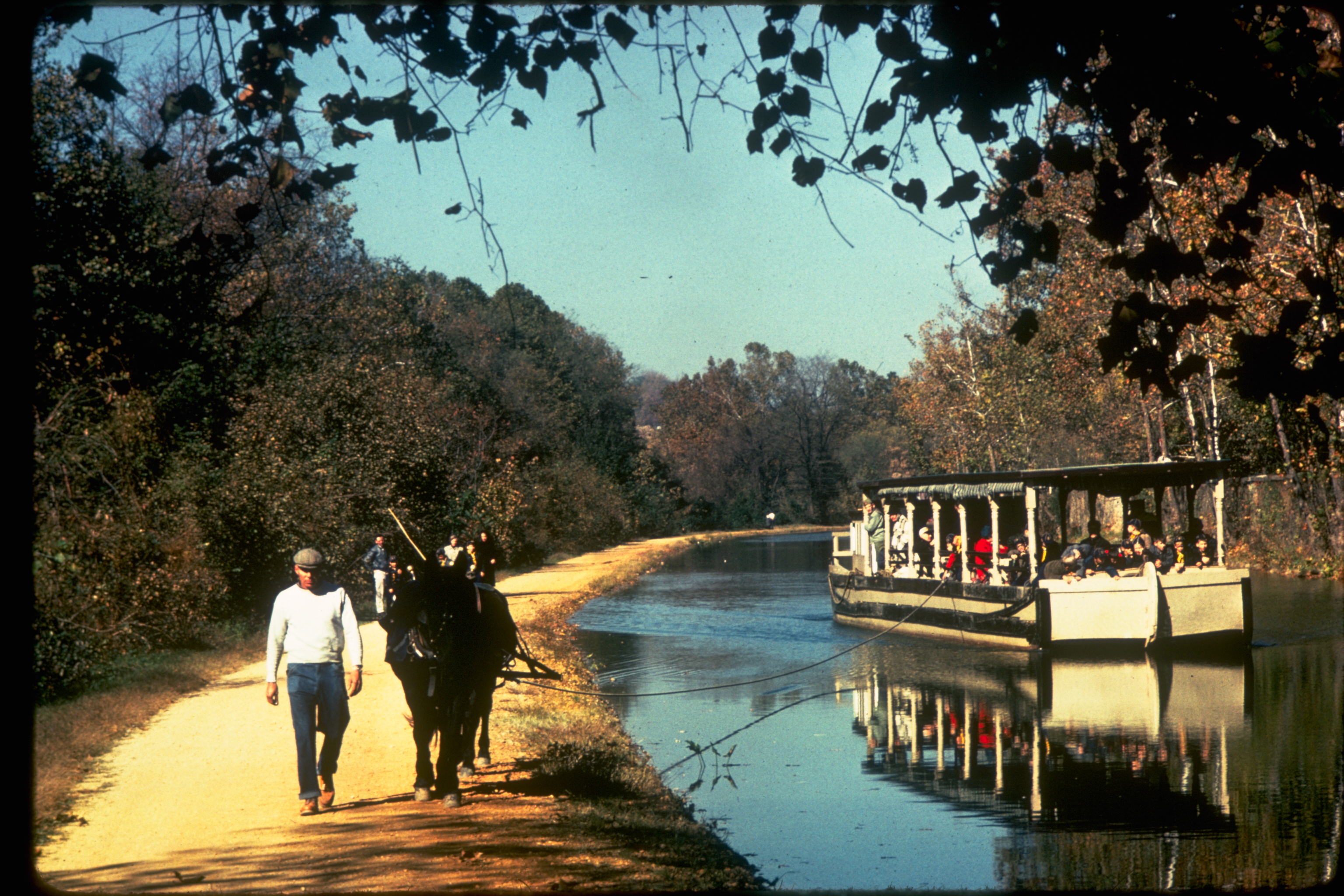
Check Out: 10 BEST Revolutionary War Sites In America
More West Virginia National Parks
4. Chesapeake Bay Watershed
The Chesapeake Bay Watershed has a long and diverse history dating back to Native American communities that lived in the area for thousands of years.
The first European settlement in the region was established by the English in the early 17th century, and the Chesapeake Bay became an important center of commerce and agriculture, particularly tobacco cultivation.
Over time, the Chesapeake Bay Watershed faced environmental challenges such as overfishing, pollution, and habitat loss.
In the 20th century, various initiatives were launched to restore the health of the Bay and its watershed, including the Chesapeake Bay Program, which was established in 1983 to coordinate conservation efforts across the region.
Despite ongoing challenges, the Chesapeake Bay Watershed remains an important ecosystem and cultural treasure, and efforts to protect and restore its health continue to this day.
.jpg)
Check out: 5 MUST-SEE Historic Sites In Alabama
5. Gauley River National Recreation Area
If you’re looking for a wild adventure then the West Virginia National Parks will not disappoint you. Take, for example, the Gauley River National Recreation Area.
The 25 miles of free-flowing Gauley River and the six miles of the Meadow River pass through scenic gorges and valleys containing a wide variety of natural and cultural features. The Gauley River contains several class V+ rapids, making it one of the most adventurous white water boating rivers in the east.
As the National Park Service notes, Gauley River National Recreation Area protects 25 miles of the Gauley River and six miles of the Meadow River that pass through scenic gorges and valleys containing a wide variety of natural and cultural features.
Every September as water is released from Summersville Dam, whitewater enthusiasts from all over the world flock to the Gauley River to experience what is considered by many people to be one of the most thrilling whitewater rafting opportunities in the country.
Dropping more than 668 feet through 25 miles of rugged terrain, the Gauley River’s complex stretch of whitewater features more than 100 rapids with a steep gradient, technical runs, an incredible volume of water and huge waves. Its vigorous rapids, scenic quality and inaccessibility combine to make Gauley River one of the premier whitewater runs in the world.
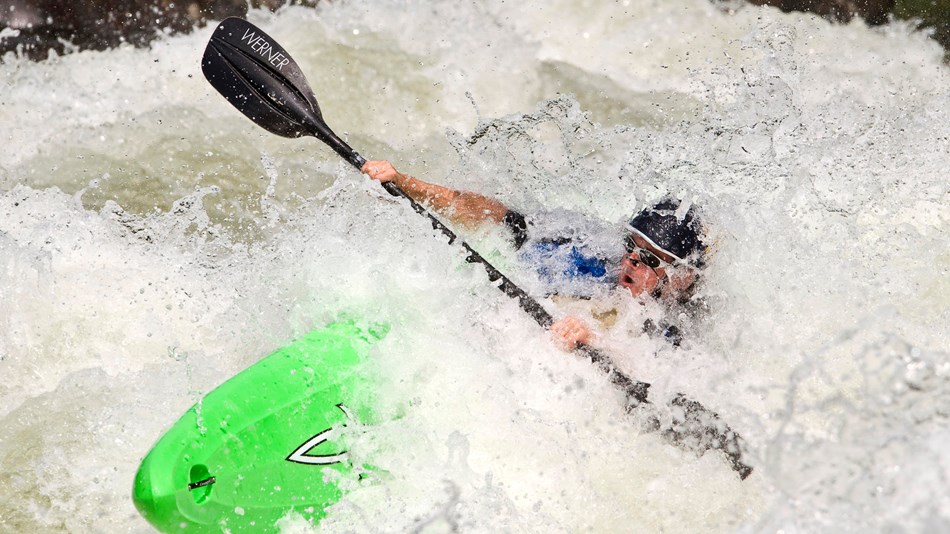
Things To do
In additional to whitewater rafting, there’s also camping available at the Gauley Tailwaters.
Fishing is another popular activity. You can catch trout, smallmouth bass, walleye and muskellunge.
And there are some wonderful nearby attractions which include:
- Carnifex Ferry Battlefield State Park: Carnifex preserves the site of an important Civil War battlefield. Overlooks provide outstanding views of the Gauley River. The park features hiking trails, picnic areas, overlooks, and a museum.
- Hawks Nest State Park: It offers outstanding views into the gorge just north of the New River Gorge Bridge. The park features a lodge, picnic areas, hiking trails, and jet boat ride on the New River.
- Babcock State Park: It’s one of the oldest parks in West Virginia, is located within the boundaries of New River Gorge National Park and Preserve. A feature of the 4,000 acre park is a widely photographed grist mill. Within the park are log cabin accommodations, hiking trails, a stable, a lake for fishing and boating, and campsites.
- Summersville Lake: It provides outstanding opportunities for boating, swimming, fishing, and camping.
- Manongahela National Forest: It’s a fantastic place to hike, camp, hunt, and fish.
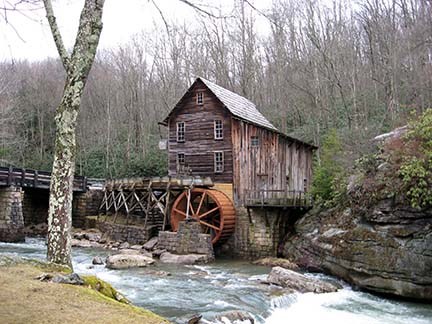
Check Out: 12 MUST-SEE Historic Sites In Georgia
6. Harpers Ferry National Historical Park
If I had to select a favorite among the West Virginia National Parks it would have to be Harpers Ferry National Historical Park.
It’s one of the oldest national parks in the United States. Harpers Ferry has a rich and diverse history that spans over several centuries and has been a site of significant events in American history.
The history of Harpers Ferry begins with the establishment of a ferry service across the Potomac River in the late 1700s. In the early 1800s, the U.S. government established a national armory and arsenal in Harpers Ferry, which became one of the largest producers of firearms in the country.
During the Civil War, Harpers Ferry was the site of several key events, including John Brown’s raid on the armory in 1859, which was aimed at inciting a slave insurrection, and a Confederate capture of the town in 1861.
After the Civil War, Harpers Ferry continued to play a role in American history as a center of industry and transportation.
In the late 19th and early 20th centuries, the town declined, and much of its historic architecture and infrastructure was lost.
In 1944, the National Park Service established Harpers Ferry National Monument to preserve and interpret the town’s rich history, and in 1965, it was redesignated as Harpers Ferry National Historical Park.
Today, the park is a popular destination for visitors interested in learning about American history, hiking, and exploring the natural beauty of the area.
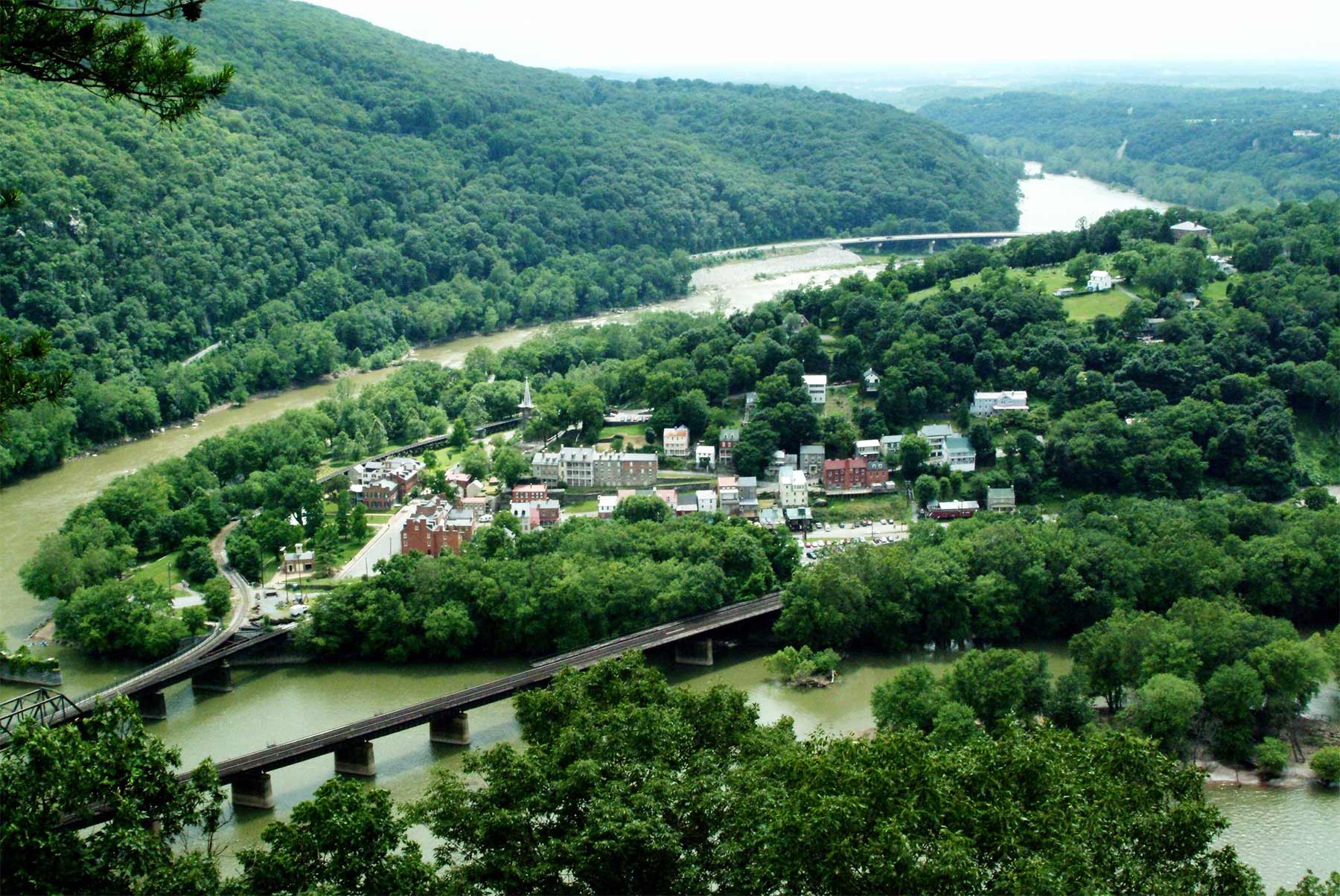
CHECK OUT: 27 EPIC Maryland National Parks Worth Visiting
Things To Do At Harpers Ferry
Some popular activities at the park include:
- Historic Tours: Visitors can take guided tours of the park’s many historic buildings and sites, including the armory and arsenal, the town, and John Brown’s Fort.
- Hiking: The park is home to several miles of trails, including the famous Appalachian Trail, which runs through the park and offers stunning views of the surrounding landscape.
- Rock Climbing: Harpers Ferry is a popular destination for rock climbers, with a variety of climbing routes and climbing schools available.
- Rafting and Kayaking: The Potomac and Shenandoah Rivers run through the park, offering opportunities for rafting and kayaking, as well as fishing.
- Living History Programs: Throughout the year, the park offers living history programs and events, including reenactments, demonstrations, and hands-on activities.
- Wildlife Watching: The park is home to a diverse array of wildlife, including deer, foxes, birds, and other species, which can be seen on a wildlife watching tour or while hiking through the park.
- Museums and Exhibits: Visitors can learn more about the history of Harpers Ferry and the surrounding region at the park’s museums and exhibits, including the John Brown Museum and the National Park Service Visitor Center.
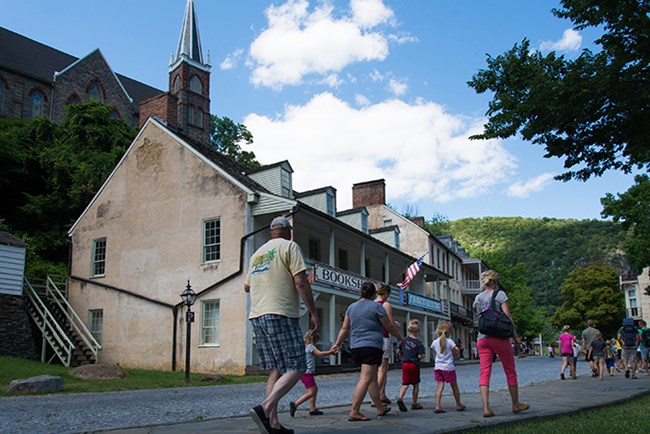
There’s The Appalachian Trail Too
If you’re looking to combine history and nature then check out the 22 miles of hiking trails at Harpers Ferry. It happens to be the mid-point of the 2,178-mile Appalachian Trail.
Picnicking is also available at Harpers Ferry National Historical Park at a designated picnic area adjacent to the Visitor Center parking lot. Picnic tables are on a first-come, first-serve basis.
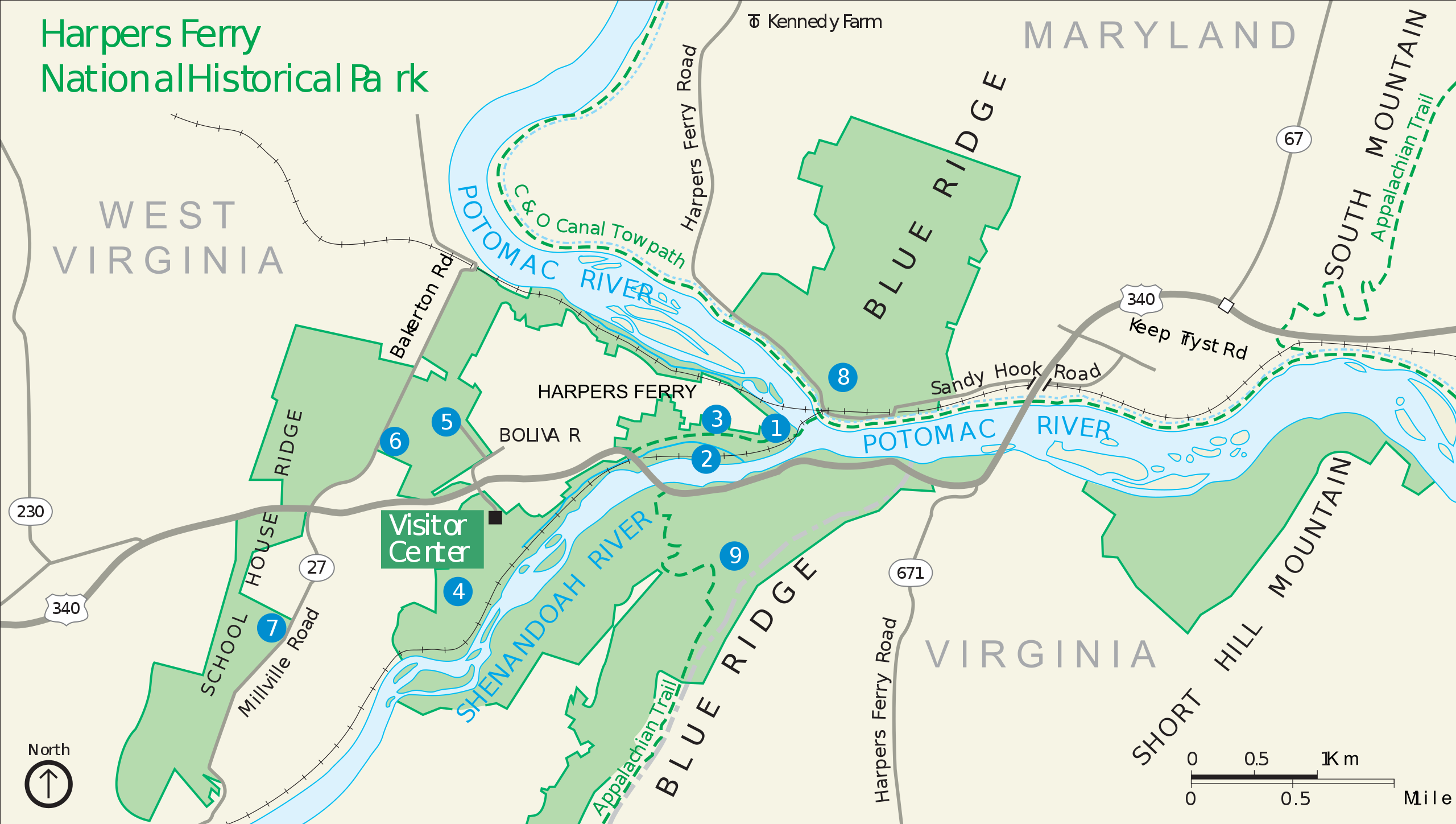
Check out: 30 EPIC Virginia National Parks Worth Visiting
More West Virginia National Parks
7. Lewis & Clark National Historic Trail
West Virginia National Parks feature not one, but two stunning scenic trails. And one of these celebrates two of the most intrepid explorers in American history.
The Lewis and Clark National Historic Trail follows the historic outbound and inbound routes of the Lewis and Clark Expedition. As a retired history teacher, I get goosebumps just thinking about the Corps of Discovery and their incredible trek.
Commemorating the Lewis & Clark Expedition (1804-06), the Lewis & Clark Trail connects 16 states (Pennsylvania, Ohio, West Virginia, Kentucky, Indiana, Illinois, Missouri, Kansas, Nebraska, Iowa, South Dakota, North Dakota, Montana, Idaho, Washington and Oregon).
The trail is administered by the National Park Service. It’s not a hiking trail, but does provide opportunities for hiking, boating and horseback riding at many locations along the route.
It’s a great opportunity to see the USA while learning about the brave men (and one woman) who weren’t able to make the journey in an air-conditioned SUV.
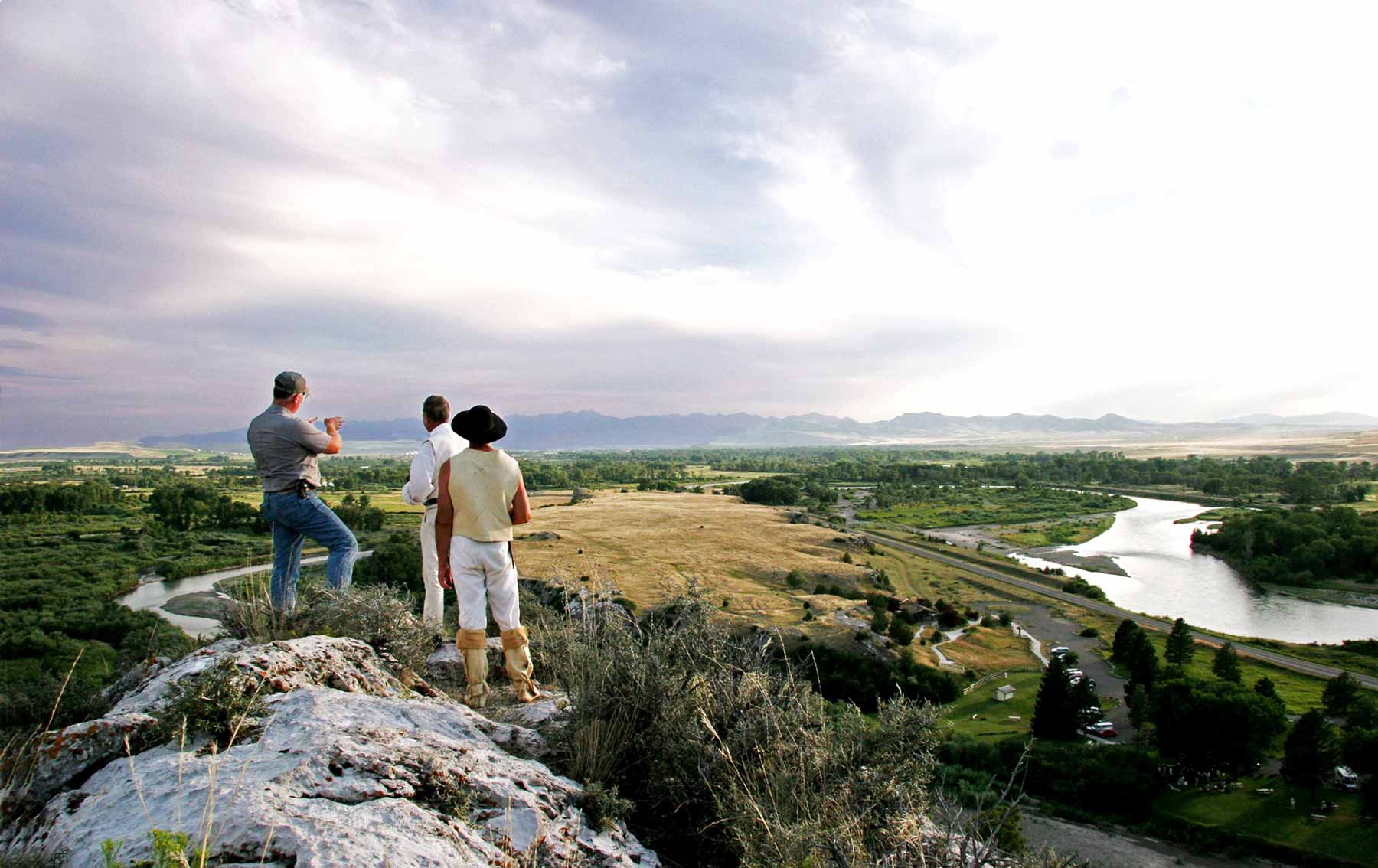
Check Out: 40 EPIC National Parks In Washington D.C.
8. New River Gorge National Park & Preserve
New River Gorge National Park & Preserve is located in West Virginia, and is one of the newest national parks in the country, having been designated as a park in 2020.
The park was established to protect and preserve the scenic New River Gorge, as well as the cultural and historical resources in the area.
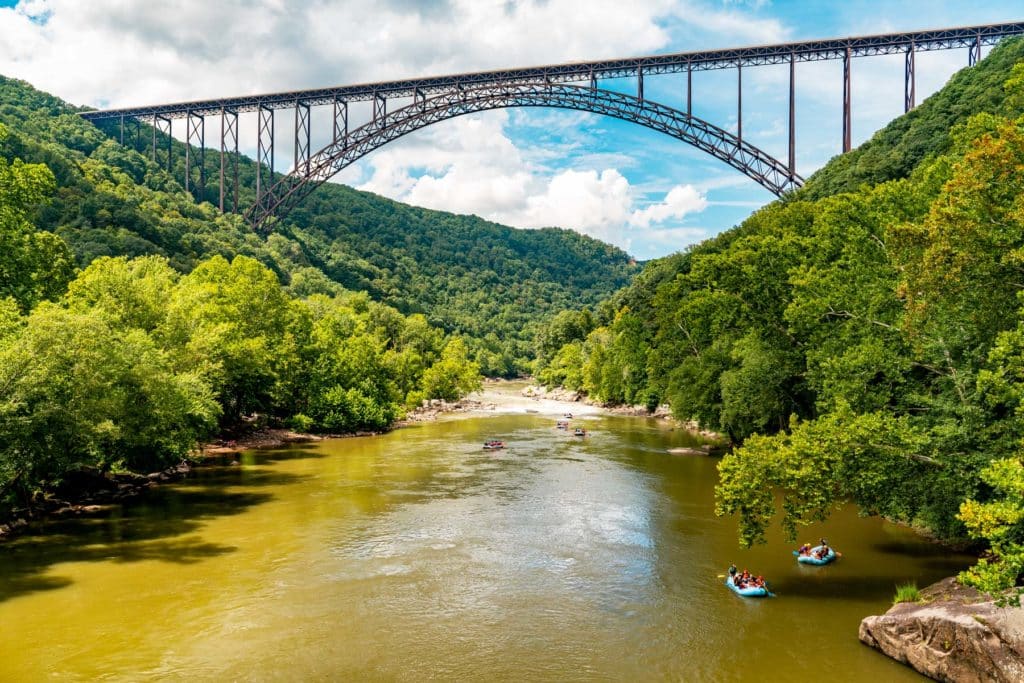
The New River is one of the oldest rivers in North America and has been an important resource for people for thousands of years, providing water, food, and transportation.
The area was first settled by European Americans in the late 1700s and became an important center of agriculture, transportation, and industry in the 19th and early 20th centuries.
By the mid-20th century, the New River Gorge became known as a destination for adventure sports, particularly white-water rafting, and as a result, the region experienced significant growth and development.

In the 1970s, efforts began to protect the New River Gorge and its surrounding area, including the creation of the New River Gorge National River in 1978.
In 2020, the New River Gorge National River was re-designated as New River Gorge National Park & Preserve, reflecting its expanded role as a protected area for both recreation and conservation.
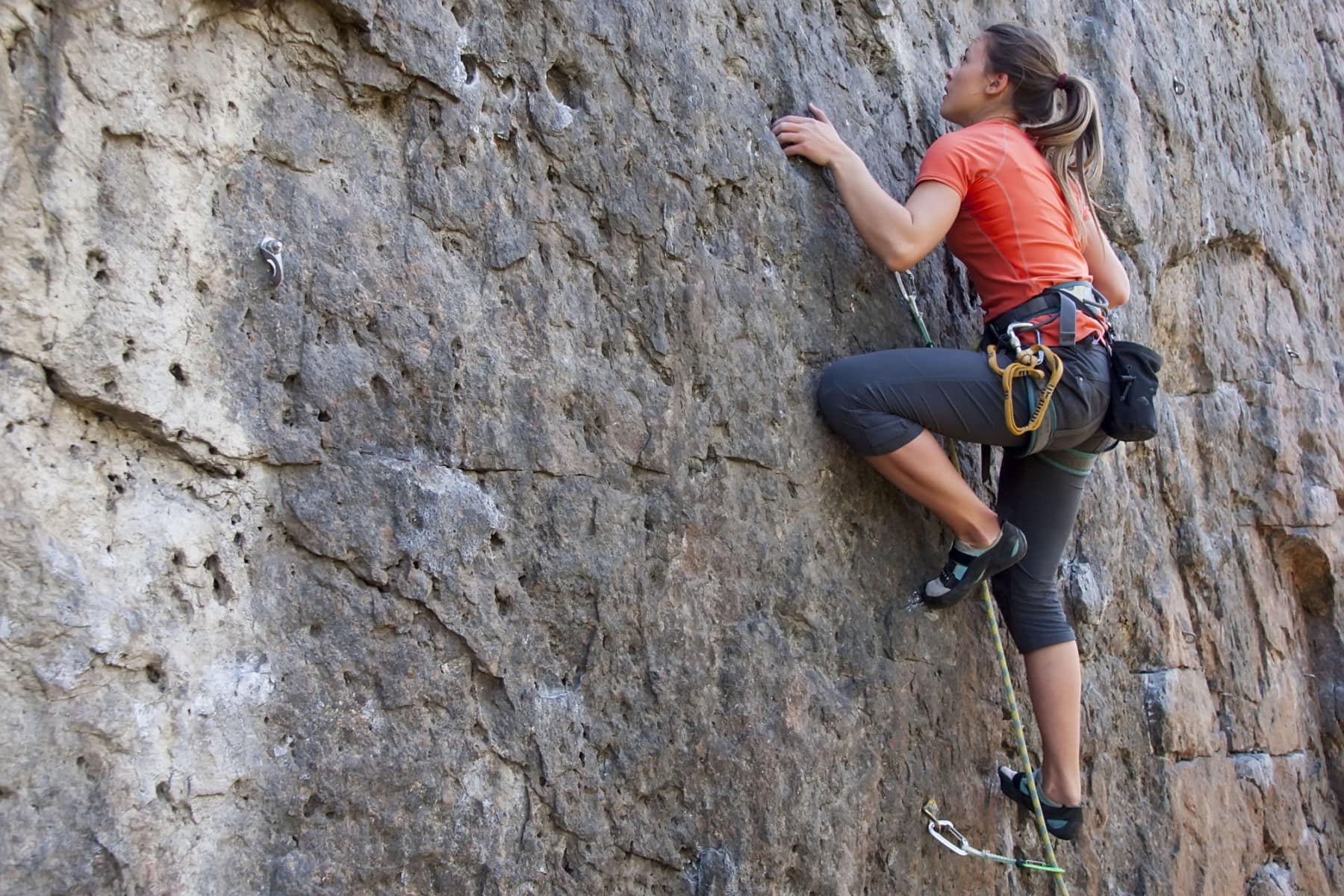
Outdoor Activities at New River Gorge
There are some truly wonderful outdoor activities available which include:
- Biking: New River Gorge offers many exciting biking trails for all experience levels from easy rail trails to more difficult mountain bike trails.
- Camping: New River Gorge National Park and Preserve provides opportunities for primitive camping only.
- Climbing: With over 1,600 established climbing routes, New River Gorge is one of the most popular climbing areas in the country.
- Hiking: Trails range from 1/4 mile to 7 miles in length. Several can be easily connected to make for longer excursions. Difficulty varies from flat, smooth walking to steep challenging terrain.
- Hunting: It is permitted throughout most the park on federally owned land. You will need to check with the park regarding the regulations governing this activity.
- New River Gorge Scenic Drive: The 83-mile route includes interstates, divided highways, and two-lane roads. Along the way are broad vistas as well as small glimpses of both the past and the present.
- Whitewater Rafting: The Lower Gorge has some of the biggest of the big with rapids ranging in difficulty from Class III to Class V.
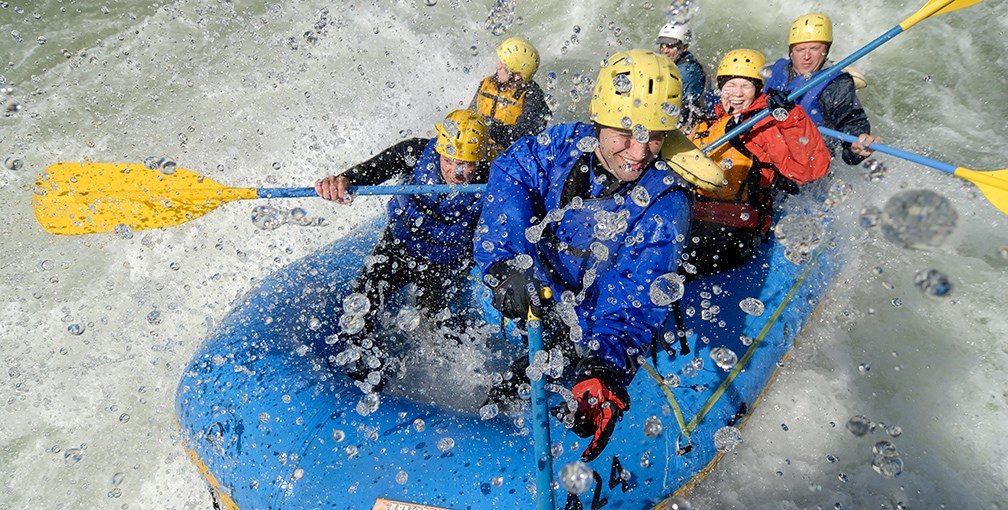
Check Our Our New River Gorge Film
Journey with More Than Just Parks as we explore a gorge teeming with rugged beauty, ancient waters, and epic overlooks. This is New River Gorge. Filmed primarily in stunning UHD 8K.
To create this film we spent a few weeks on location in New River Gorge National Park as part of a partnership with West Virginia Tourism. The purpose of the video is to highlight the park’s unique scenic, historic, and adventurous character as well as promote responsible recreation within.
West Virginia National Parks FAQ
The state’s rolling mountains, hills and valleys earned it the nickname of The Mountain State, and it is well-known for its range of outdoor activities, including hiking, mountain biking, skiing and whitewater rafting.
The following is a list of must-see historic sites in West Virginia:
Harpers Ferry National Historical Park
New River Gorge National Park & Preserve
Chesapeake & Ohio Canal National Historical Park
Appalachian National Scenic Trail
Lewis & Clark National Historic Trail
The Greenbrier
West Virginia State Museum
Matewan Historic District
Grave Creek Mound Historical Site
Cass Scenic Railroad State Park
Why Trust Us About West Virginia National Parks?
We’re Jim Pattiz and Will Pattiz, collectively known as the Pattiz Brothers (and sometimes the Parks Brothers) and we absolutely LOVE the national parks.
You should probably know that we don’t just make this stuff up out of thin air. We’ve spent our entire adult lives exploring and filming America’s national parks and public lands.
We’ve worked with the National Park Service, the Department of Interior, USDA, and the U.S. Forest Service for years creating films on important places and issues. Our work has been featured in leading publications all over the world and even some people outside of our immediate family call us experts on the national parks.
Meet The Parks Brothers
Map Of National Parks In West Virginia
List Of National Parks In West Virginia
- Appalachian National Scenic Trail
- Bluestone National Scenic River
- Chesapeake & Ohio Canal National Historical Park
- Chesapeake Bay Watershed
- Gauley River National Recreation Area
- Harpers Ferry National Historical Park
- Lewis & Clark National Historic Trail
- New River Gorge National Park & Preserve
We Hope You’ll Follow Our Journey

Our goal here at More Than Just Parks is to share the beauty of America’s national parks and public lands through stunning short films in an effort to get Americans and the world to see the true value in land conservation.
We hope you’ll follow our journey through the parks and help us to keep them the incredible places that they are. If you’re interested in joining the adventure then please sign up below!

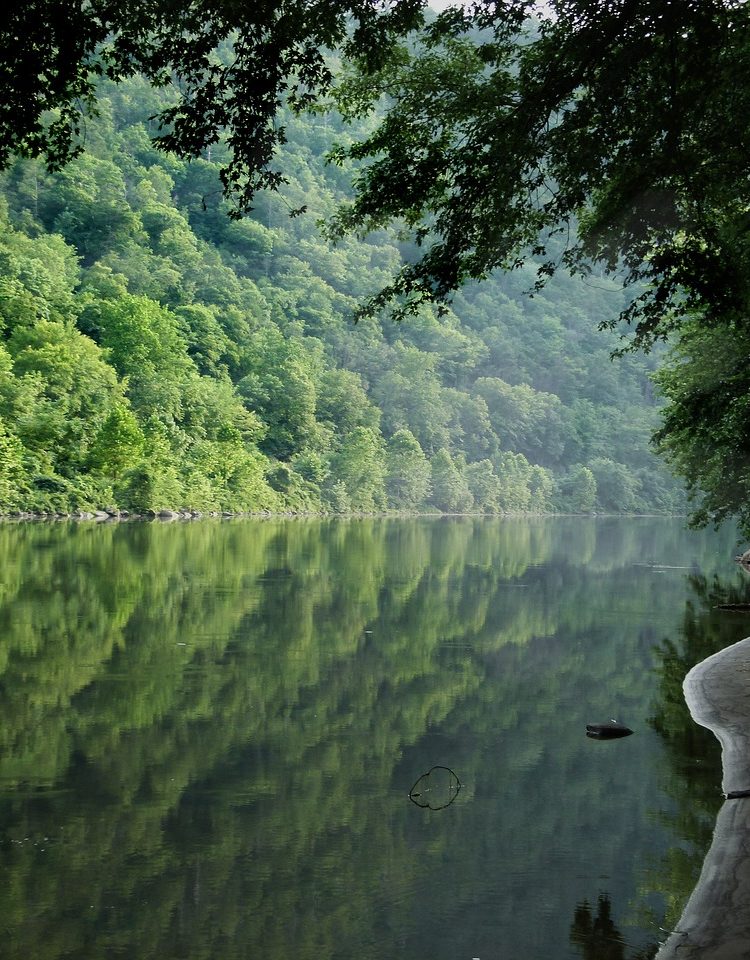

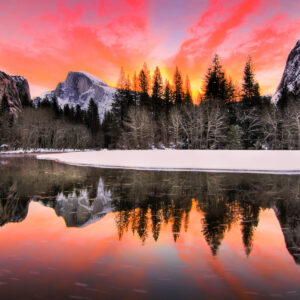

Leave a Reply